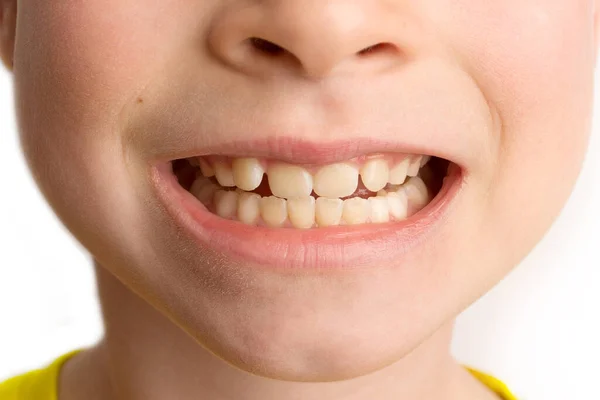Share this @internewscast.com
There is no direct evidence suggesting that serum vitamin D can cause dental caries or molar incisor hypomineralization (MIH) in children. However, several studies have explored the relationship between serum vitamin D status and oral health outcomes in children, including dental caries and MIH:
- A 2015 study revealed that higher serum 25-hydroxy-vitamin D (25(OH)D) concentrations are independently associated with a reduced risk of tooth loss in individuals aged 50 years.
- A 2024 study aimed to investigate potential associations between serum vitamin D status and dental caries or MIH in 7-9-year-old Norwegian children. The study concluded that vitamin D status was not significantly associated with the prevalence and number of teeth affected by dental caries or MIH.
- A systematic review and meta-analysis published in 2023 found that children with vitamin D deficiency had a 22% higher risk of dental caries compared to those with normal vitamin D levels.
Although some studies have explored the relationship between serum vitamin D and oral health outcomes in children, the findings are inconsistent, and there is no direct evidence to support the idea that serum vitamin D can cause dental caries or MIH in children.
Understanding The Relationship Between Dental Caries And Molar Incisor Hypomineralisation (MIH)
The relationship between serum vitamin D levels and dental caries or molar incisor hypomineralisation (MIH) in children is complex and the research findings are mixed. Here’s a summary of what we know:
Dental Caries:
- Some studies suggest a link: A 2023 meta-analysis found that children with vitamin D deficiency had a 22% higher risk of dental caries compared to those with normal levels. Other studies have also shown associations between low vitamin D and increased caries prevalence.
- Other studies show no link: Several studies haven’t found a significant association between vitamin D levels and caries risk. A recent study in Norwegian children, for example, found no significant association after adjusting for other factors.
Molar Incisor Hypomineralisation (MIH):
- Limited research: There’s less research on the link between vitamin D and MIH. Some studies have shown higher MIH prevalence in children with vitamin D deficiency, but others haven’t found a significant association.
Overall:
- The evidence for a causal relationship between vitamin D deficiency and dental caries or MIH is inconclusive. More research is needed to confirm or refute the potential link.
- Other factors, such as dietary habits, oral hygiene practices, and fluoride exposure, play a much bigger role in dental caries and MIH development than vitamin D alone.
What Is The Recommended Daily Intake of Vitamin D For Children
The recommended daily intake of vitamin D for children varies based on their age:

- Babies younger than 12 months old require 400 IU of vitamin D each day.
- Toddlers, older children, and adolescents need 600 IU of vitamin D daily.
For specific scenarios:
- Breastfed and partially breastfed infants should be supplemented with 400 IU of vitamin D per day.
- Non-breastfed infants and older children who consume less than 32 ounces per day of vitamin D-fortified formula or milk should receive a vitamin D supplement of 400 IU per day.
- Adolescents who do not obtain 600 IU of vitamin D daily through foods should also receive a supplement.
Vitamin D plays a crucial role in optimizing bone health in children and adolescents, contributes to the immune system response, and has links to mental health. Foods rich in vitamin D include fatty fish (like salmon and tuna), liver, eggs, and fish oils. However, since most children may not consume these foods in sufficient quantities, vitamin D supplements or multivitamins containing vitamin D are often recommended.
What Is Serum Vitamin D?
Serum vitamin D is a fat-soluble vitamin that plays an important role in bone health, muscle function, and the immune system. It is found in two main forms: vitamin D2 (ergocalciferol) and vitamin D3 (cholecalciferol). Vitamin D2 is found in some foods and supplements, while vitamin D3 is produced by the body when exposed to sunlight.
The symptoms of vitamin D deficiency in children can be varied. Some common symptoms include:
Infants:
- Growth failure
- Irritability
- Lethargy
- Muscle weakness
- Frequent respiratory infections
Children and Teens:
- Pain in weight-bearing joints like the knees
- Bone fractures
- Slow growth
- Muscle pain
- Developmental delays.
- Rickets, which can cause bowed or bent bones, muscle weakness, bone pain, and joint deformities.
General Symptoms include: muscle weakness or cramps, bone pain, and feeling tired or depressed. Severe vitamin D deficiency may also be associated with hypocalcemia, which may cause tetany or seizures
It’s important to note that many people with low vitamin D may not have any symptoms, and the only way to confirm a deficiency is through a blood test conducted by a healthcare professional.
What Are The Natural Sources of Vitamin D For Children
Natural food sources of vitamin D for children encompass:
- Fatty fish like salmon, trout, tuna, and mackerel.
- Fish liver oils.
- Egg yolks.
- Cheese.
- Vitamin D-fortified foods including:
- Milk
- Yogurt
- Cereal
- Orange juice
- Margarine
- Some 100% juices.
It’s crucial to ensure that children’s diets incorporate these vitamin D-rich sources to help them meet their daily recommended intake.
Who Is At Risk For Vitamin D Deficiency?
People who are at risk for vitamin D deficiency include:
- Infants and young children
- Older adults
- People with limited sun exposure
- People with darker skin
- People who are obese or overweight
- People with certain medical conditions, such as Crohn’s disease or celiac disease.













